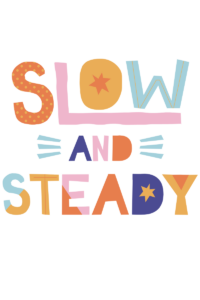Latinx Heritage Month
Here’s a national celebratory month you may not be aware of. It is celebrated from September 15 to October 15. This month gives people a chance to think about the Latinx presence in history and raises conversations about the culture. But there are mixed feelings about this celebration. Hispanic Heritage Month
Let’s Celebrate!
It’s an opportunity for the Latinx community to celebrate each other. People outside the community also have a chance to learn about a culture, not of their own. It’s a chance to build awareness. But not just recognition from people outside of the community, even those of us who are second or third-generation immigrants.
Many people I speak with don’t remember ever discussing or participating in Latinx Heritage Month previously known as Hispanic Heritage Month at school. This includes my own Latino children who are 8, 17, and 19.
There are teachers who do choose to have discussions and activities around this time. What I worry about is are there any activities done outside of this month. Typically classrooms will have posters around the room and a couple of celebrations, but eventually, everyone moves on. Hispanic Heritage Books

Should We Cancel?
This month empowers a greater understanding and deeper appreciation for the enduring contributions of Latinos to our country (Guzman 2013). Here’s the issue and why many feel we should put an end to this celebration. Just like the months dedicated to celebrating Black history, Asian history, Women’s history, LGBTQ+ pride these celebrations are confined to a 28-31 day period. The whole month turns into a watered-down version of a rich history which often is relayed with immense stereotypes. It becomes superficial. Is it fair to have a one-dimensional approach to celebrating diversity? I don’t think it’s particularly meaningful or inspiring to our students. Many people refuse to acknowledge these months as an act of protest because it’s disrespectful to its community. Hispanic Heritage Month Teaching Materials
It’s a disservice for EVERYONE to plan these particular months as the ONLY time to pay attention to a country, culture, or community. Cultures should be represented every day, year-round so students can be proud of their identities, and make sense of the world around them.

If it was not clear with my earlier sentiments, this month is a reason to CELEBRATE. Latinx Heritage Month is useful for bringing in members of other communities, so they too can learn about our heritage, culture, and contributions. But we should not stop there. What we need to CANCEL is the idea of limiting diversity to a couple of days out of your week or month.

We still have a lot of work to do to incorporate different cultures and heritages into nationwide conversations. This month is a good starting point for your classroom because it brings awareness to a new community but also helps students celebrate one’s own.
Start having conversations with your district leaders, curriculum teams, or fellow staff members about incorporating diversity in students’ everyday lives. It may seem easier to do in subjects like ELA or Social Studies, but diversity can be a source of math problems as well. Look at what your curriculums focus on and adjust. Hispanic Heritage Lessons
To learn more about the cultural levels that help students understand and relate to content better click here.
In my free resource section, you have access to:
- Latinx/Hispanic Heritage Resource packet
Want to check out more?
MEMBERSHIP SITE:
https://zennedmath.com/online-courses/
FACEBOOK GROUP: Zenned Math Teachers
https://www.facebook.com/groups/zennedmathteachers/
YOUTUBE CHANNEL: Zenned Math
https://www.youtube.com/channel/UC5njH_5LoK6G67BvZecGfnw?
WANT ME IN YOUR INBOX? Sign up for my newsletter
https://view.flodesk.com/pages/5efc876dcaabca0028b95eb5
DISCLAIMER: Some links included in this blog might be affiliate links. If you purchase a product or service with the links that I provide, I may receive a small commission. There is no additional charge to you!

